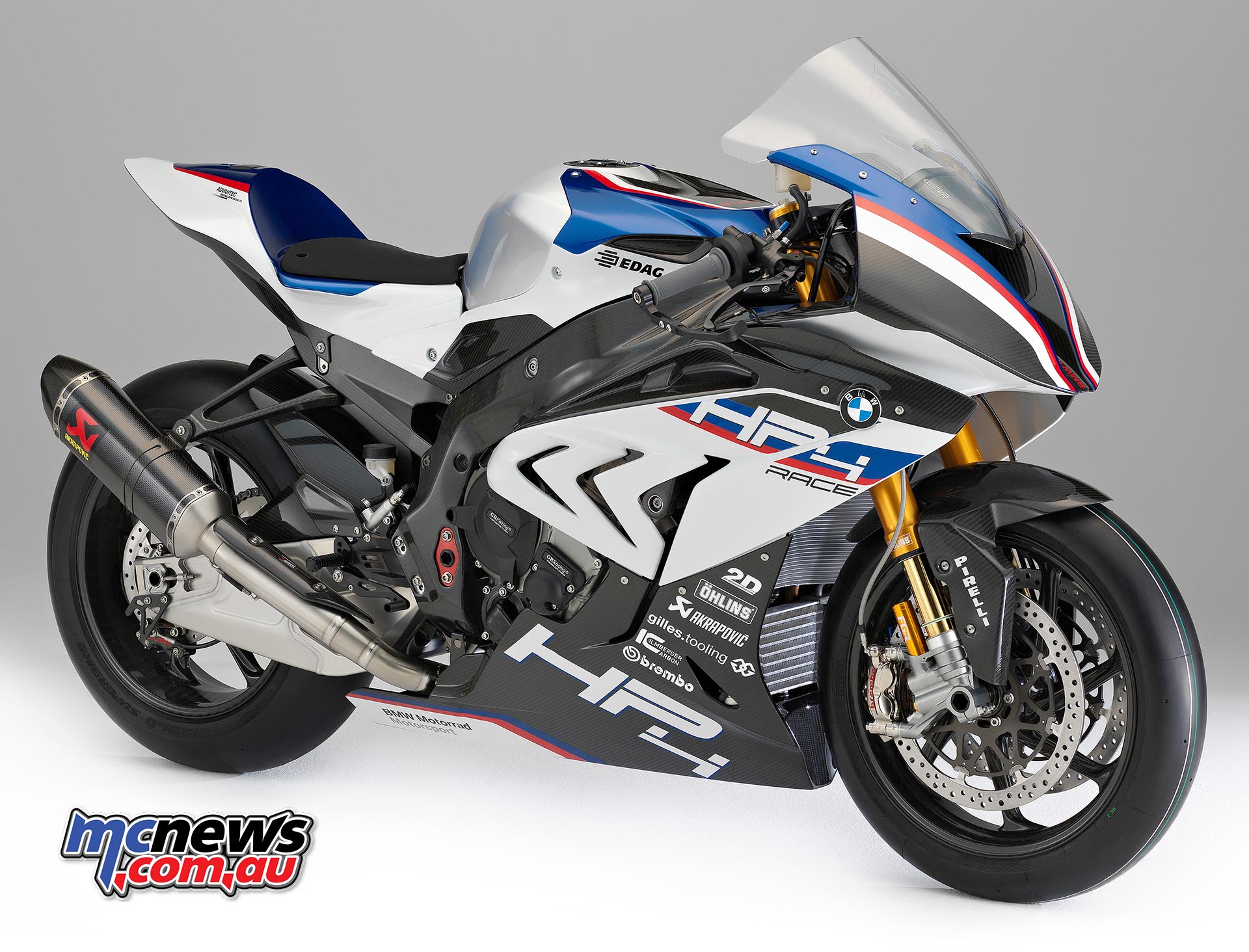2008 Ducati Desmosedici RR
With Ian Falloon
Ducati entered MotoGP in 2003, and for the first four years of they raced the four-cylinder 990 cc Desmosedici (16 valve Desmo). In the final MotoGP race for the 990 cc MotoGP bike, at Valencia in October 2006, World Superbike Champion Troy Bayliss was magnificent.
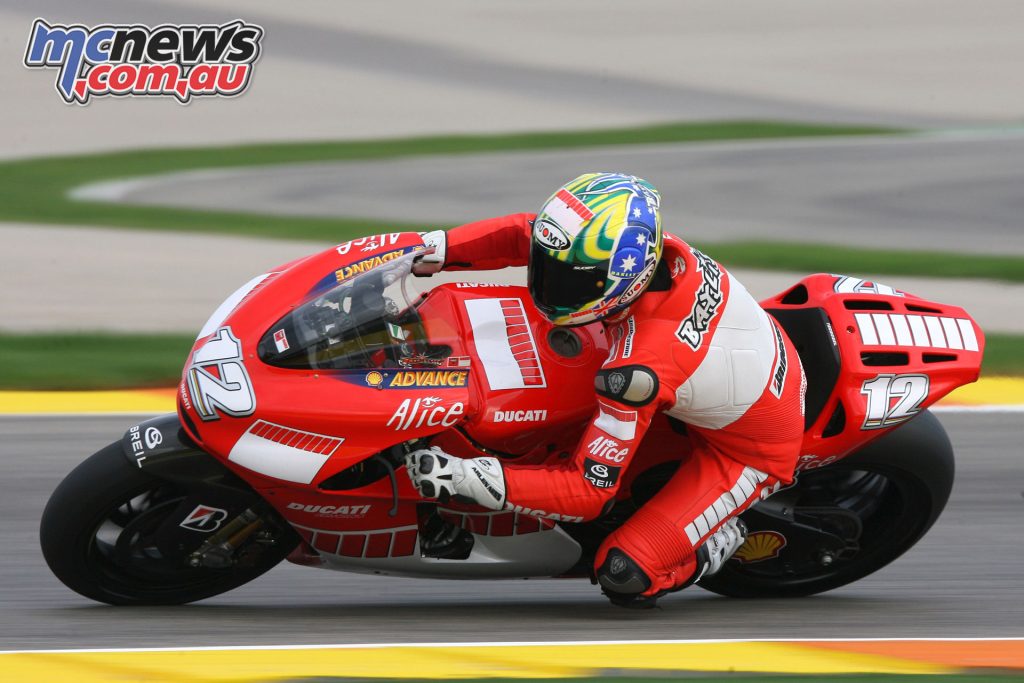
He led from start to finish, with Loris Capirossi second on a similar machine. A change in regulations for 2007 saw the 990 cc four-strokes replaced by 800 cc four-stokes.
New recruit Casey Stoner immediately proved he had the aggression and ability to get the most out of the Desmosedici. After winning the opening race at Qatar, Stoner blitzed the championship with a total of 10 race wins.
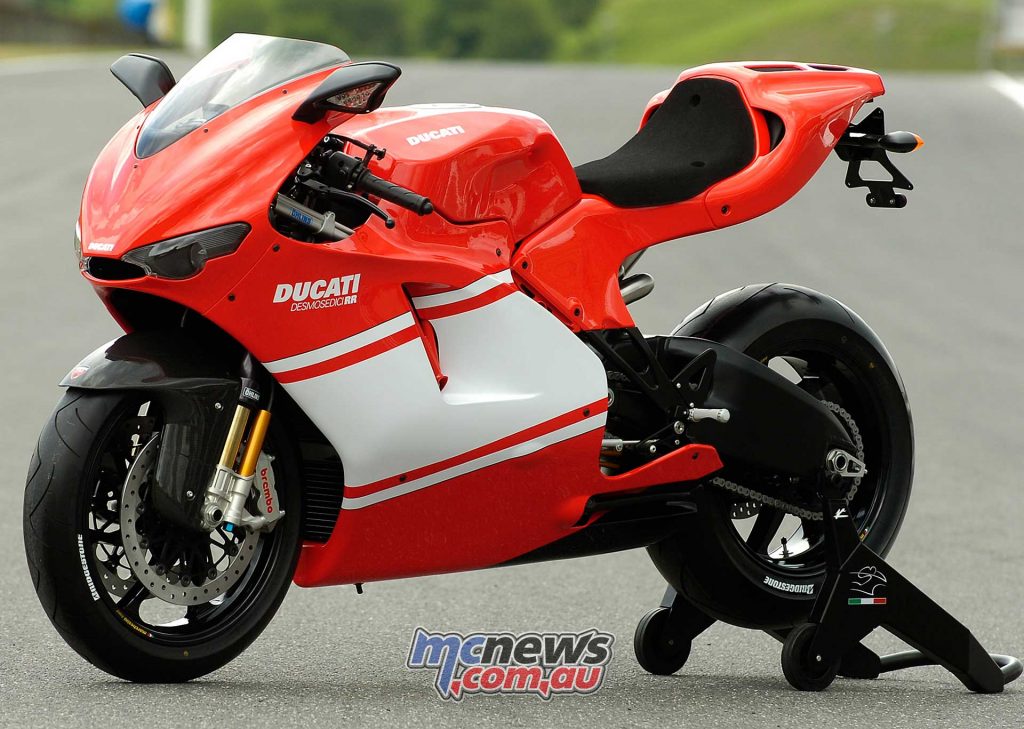
The demise of the 990 provided Ducati an opportunity to repeat the success they had earlier achieved with the round-case “Green Frame” 750 Super Sport in 1974 after their spectacular 1972 Imola 200 victory.
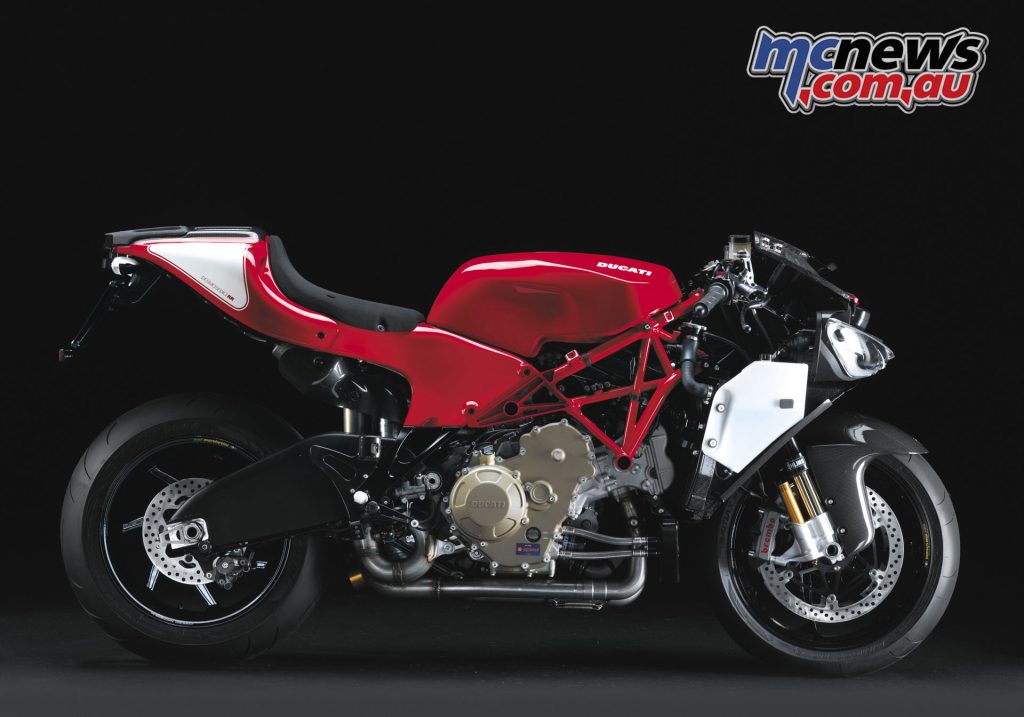
The D16RR, the first road-going MotoGP replica, was derived from the Desmosedici GP6, the body design and the aerodynamics following the same form. As on the GP6, the engine on the RR was a 16-valve Desmodromic 989 cc Vee-Four, with an 86 mm bore and 42.56 mm stroke and an asymmetrical Twin Pulse firing configuration.
The double overhead camshafts were gear driven, and the six-speed gearbox a cassette type. The clutch was a hydraulically actuated dry multi-plate slipper type.
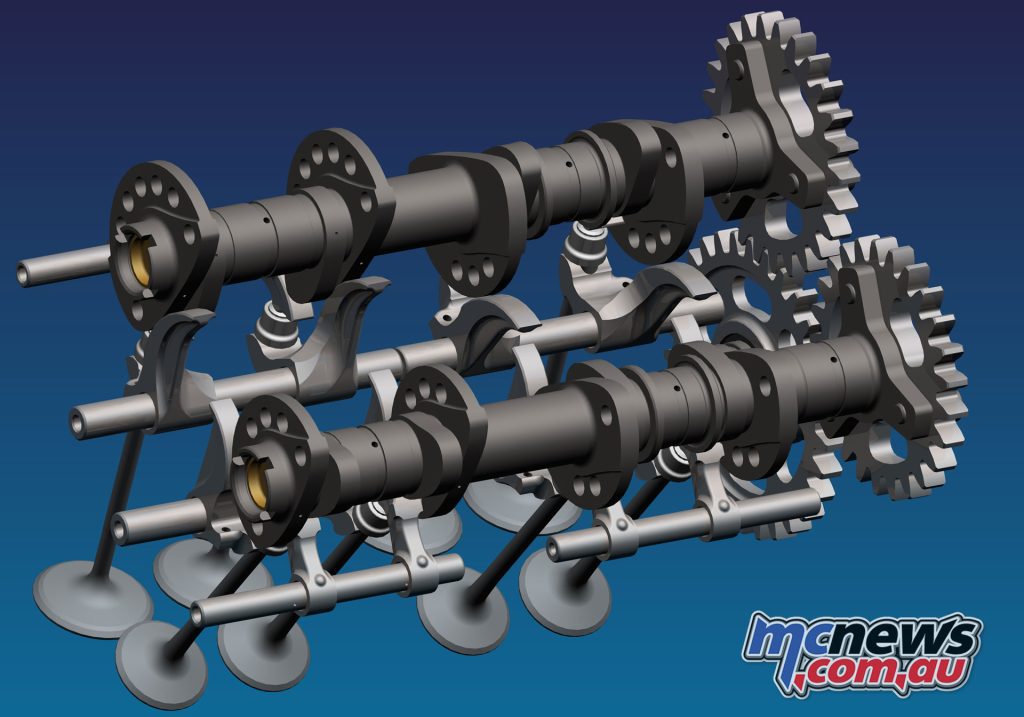
Due its limited production the aluminium engine crankcases and cylinder heads were sand-cast, connecting rods and valves titanium, and the engine covers sand-cast magnesium.
Four 50 mm Magneti Marelli throttle bodies, with 12-hole ‘microjet’ injectors fed the cylinders, and were controlled by a Magneti Marelli 5SM ECU. A 4 into 2 into 1 exhaust, with vertical exit muffler in the tail contributed to a claimed 200 horsepower at 13,800 rpm (with the 102 dB racing silencer and dedicated CPU).
Despite this extrememly high power output the Desmosedici RR was homologated for road use, with an exhaust catalytic oxygen sensor to comply with Euro3 emissions.
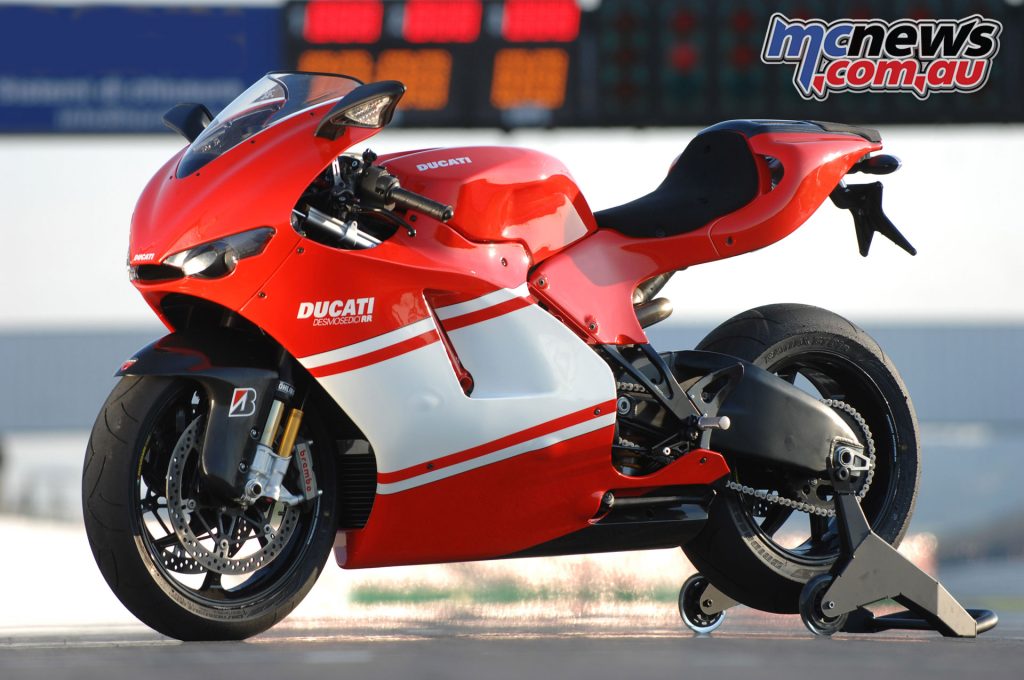
The red-painted welded tubular steel frame (ALS 450) shared its geometry with the Desmosedici GP6 and included a carbon fibre seat and rear support.
Also inspired by the GP6 was the long, cast, forged and pressed aluminium alloy swingarm, with the rear shock absorber attached above the swingarm to a rocker hinged to the crankcase.
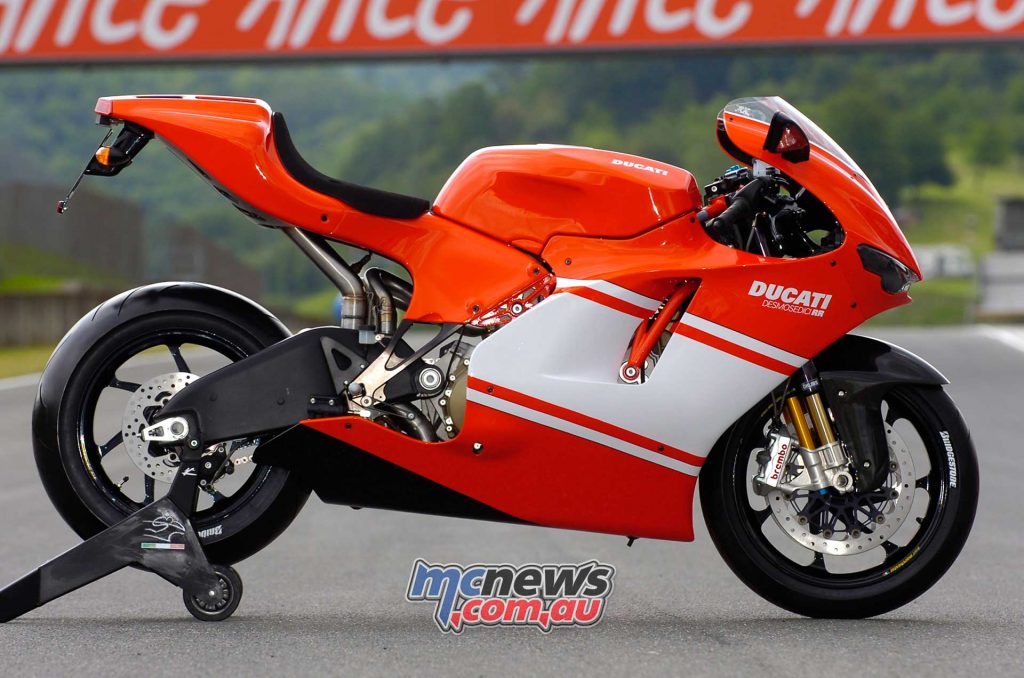
The 43 mm upside-down Öhlins FG353 pressurized forks (PFF), with TiN coated fork tubes was similar to the racing unit, as was the fully adjustable Öhlins rear shock absorber and Marchesini seven-spoke forged and machined magnesium 17 and 16-inch alloy wheels. As suppliers for the GP6, Bridgestone developed special street tyres.
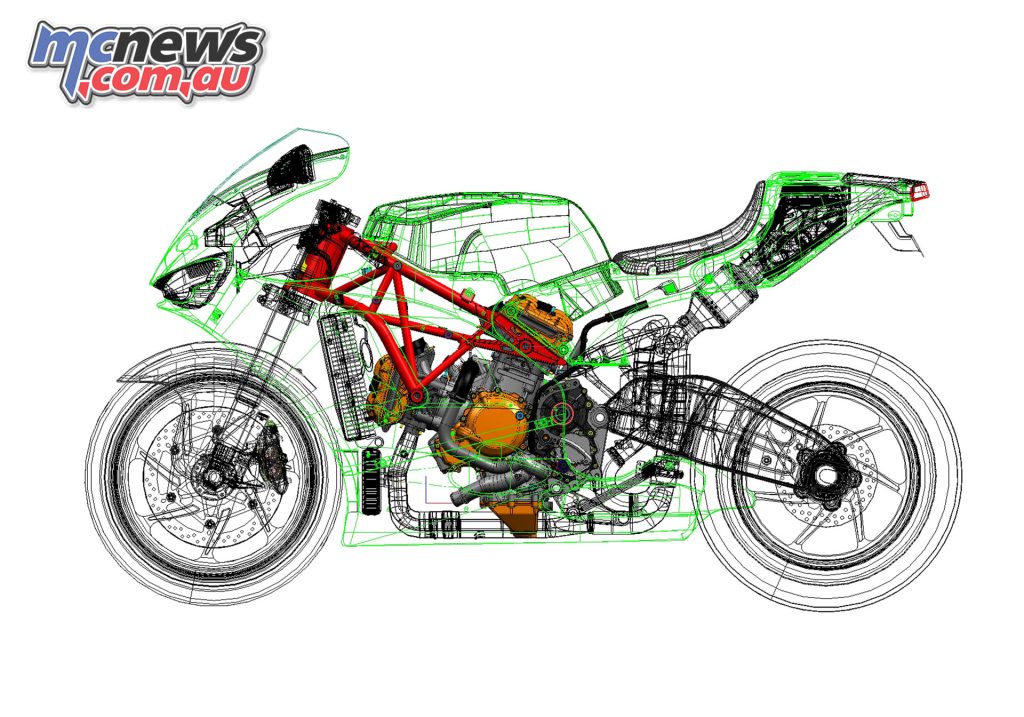
Further racing influences included a pair of Brembo radial ‘monobloc’ front brake calipers with four 34 mm pistons and 330mm discs. Alan Jenkins was responsible for the style of the carbon-fibre bodywork, aluminium tank, and colour scheme, with two versions available.
These were the Rosso GP with a white number plate on the tail section and a white Ducati logo on the fairing, and the Team Version painted like factory Corse bikes, with a white stripe on the fairing. A team sponsor decal kit was provided with each bike.
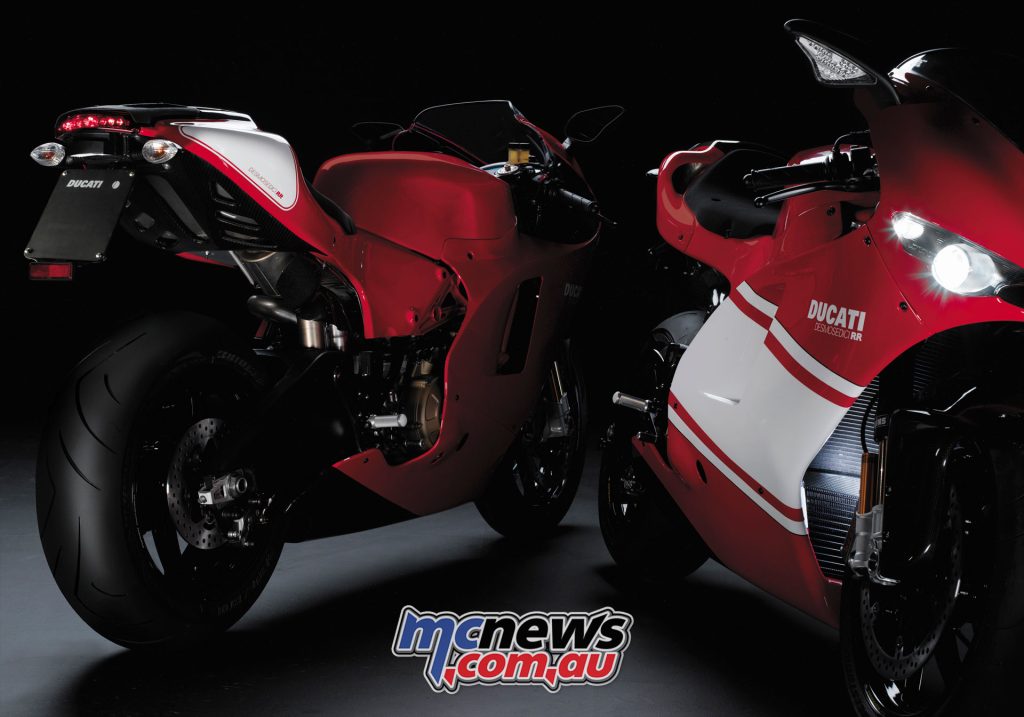
They also came with a new lightweight multifunction dashboard, as fitted to the 2007 Desmosedici GP7. Production commenced in October 2007, with final delivery of the 1500 examples completed by the end of 2008.
| 2008 Ducati Desmosecidi RR Specifications | |
| Engine | Liquid-cooled, V4, four-stroke, MagnDesmodromic |
| Capacity | 989 cc |
| Power | 200 hp @ 10500 rpm |
| Torque | 116 Nm @ 10500 rpm |
| Compression | 13.5:1 |
| Bore x stroke | 86 x 42.6 mm |
| Induction | 50 mm Magneti Marelli throttlebodies x 4 |
| Gearbox | Six-speed, Cassette |
| Final drive | Chain |
| Clutch | Dry multi-plate slipper clutch, hydraulically actuated |
| Frame | Tubular steel Trellis hybrid |
| Rake | 23.5° |
| Front suspension | Ohlins FG353P forks 43 mm pressurized, with preload, rebound and compression adjustment, TiN coated sliders, 120 mm travel |
| Rear suspension | Ohlins rear shock, with rebound, low/high speed compression adjustment, and hydraulic preload adjustment. Aluminium swingarm, 120 mm travel |
| Brakes | Dual 330 mm rotors, four-piston Brembo radial monobloc calipers, 240 mm rear rotor, floating dual-piston caliper |
| Wheels | Marchesini forged & machined magnesium alloy, seven spoke |
| Tyres | 120/70-17, 200/55-16 |
| Diameter | 240 mm |
| Dry weight | 171 kg |
| Seat height | 830 mm |
| Wheelbase | 1430 mm |





